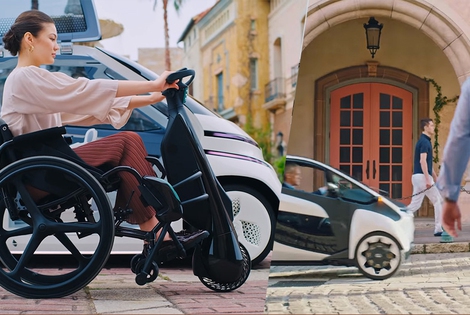
Milan has announced one of Europe’s most ambitious mobility schemes, known as Strade Aperte (open roads). Its goal is to reduce cars in phase 2 of the lockdown by increasing bike lanes and pedestrian areas.
Poland has surprised everyone as regards the use of bicycles and cycling infrastructures: in the 2014 edition of the European cycling challenge the top five cities were exclusively Polish and Italian. Rome thought to be the favourite even if it isn’t exactly a bike-friendly city, still, it ranked third after two Polish cities: the
Poland has surprised everyone as regards the use of bicycles and cycling infrastructures: in the 2014 edition of the European cycling challenge the top five cities were exclusively Polish and Italian.
Rome thought to be the favourite even if it isn’t exactly a bike-friendly city, still, it ranked third after two Polish cities: the capital Warsaw and the small city of Łódź. Even more surprising is the result of the last edition: Rome ranked fourth, while in the podium there are the Polish cities of Gdańsk, Wrocław and, again, Warsaw.
But why is Poland so committed to bicycles and cycling infrastructures? In this country the culture of bicycles is increasingly spreading. However, to keep up with Northern European nations, Poland has to better manage the situation.
According to the ReBike Altermobility association, Gdańsk is equipped with many cycling lanes and paths. There are one way signals except bikes (contrary to Rome) and bicycle stands. Łódź, instead, is a flat and square city with a long pedestrian street running in the city centre.
These remarkable results, unfortunately, coexist with inappropriate cycling infrastructures, yet Polish citizens are increasingly interested in bikes.
Poland, as written in the website eurovelo.com, is also an excellent destination for cyclotourism with its paved cycling lanes in the cities, cycling routes in the forest and along river banks. A network of cycling lanes has been rapidly built in Gdańsk, Gdynia, Sopot and Kraków. Moreover, from Warsaw it is possible to reache the Forest of Kampinoski by bike.
Siamo anche su WhatsApp. Segui il canale ufficiale LifeGate per restare aggiornata, aggiornato sulle ultime notizie e sulle nostre attività.
![]()
Quest'opera è distribuita con Licenza Creative Commons Attribuzione - Non commerciale - Non opere derivate 4.0 Internazionale.
Milan has announced one of Europe’s most ambitious mobility schemes, known as Strade Aperte (open roads). Its goal is to reduce cars in phase 2 of the lockdown by increasing bike lanes and pedestrian areas.
Formula 1, the world’s most important auto racing championship, has decided to turn the page and aim for carbon neutrality with the support of its teams, drivers and the whole racing circus.
Toyota and LifeGate began telling the story of hybrid mobility back in 2006, now, on the road to the Tokyo 2020 Olympics, they’re still treading the path of sustainable mobility. Here are the main steps of the journey.
Germany’s first solar bicycle lane could be the prototype for the roads of the future. The photovoltaic tiles melt snow and ice, and are capable of absorbing noise.
The Vespa is back in an electric version. Production has just started and the first models can be reserved online starting from October.
The city of Utrecht, in the Netherlands, is home to a bridge for cycling and walking that stretches over roof garden of a Montessori school. This project enhances practicality and will allow families to bring children to school by bike, passing through green areas. Despite their functionality, bridges are often seen as an infrastructure that is
The Lego hair bike helmet is the latest Internet craze. For now it’s just a prototype but production on a large scale will probably start soon.
Just as fires often give way to new growth, after the Dieselgate scandal, which saw Volkswagen cheating on US emission rules, the German car manufacturer radically changed course, beginning to focus on sustainable mobility. The German car company aims to propose thirty zero-emission models and produce at least one million battery electric vehicles by 2025. An ambitious mission
Sustainable, two-wheel mobility is triumphing in Copenhagen. After years of investments, policies, and infrastructural changes, bikes now outnumber cars in the city centre. The website Copenhagenize has released data linked to the number of vehicles entering the city centre, which are monitored by the city’s administration on a daily basis. Last year, 265,700 bikes have entered







